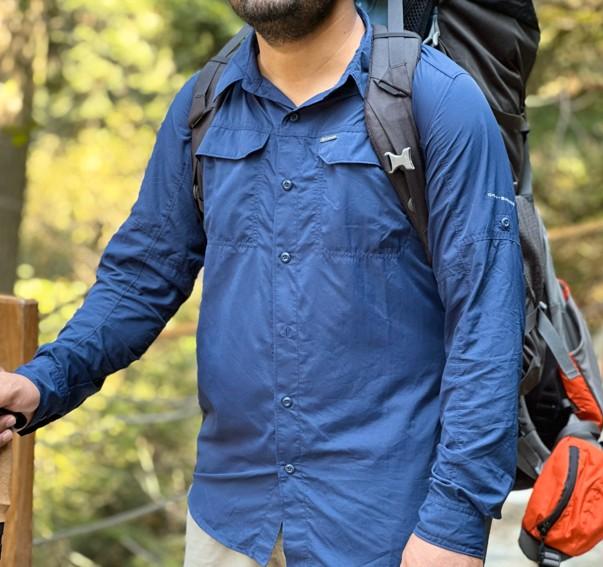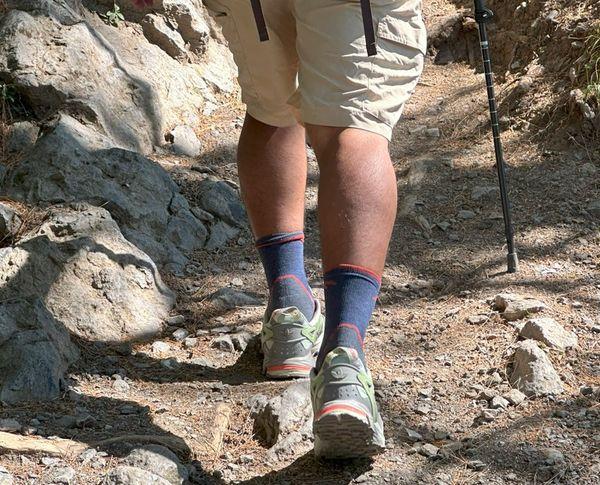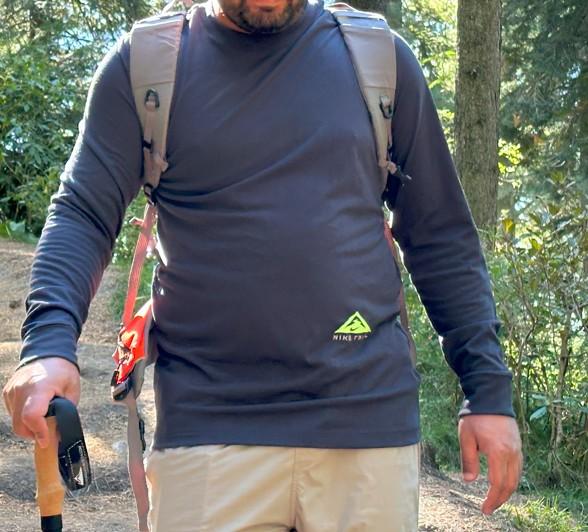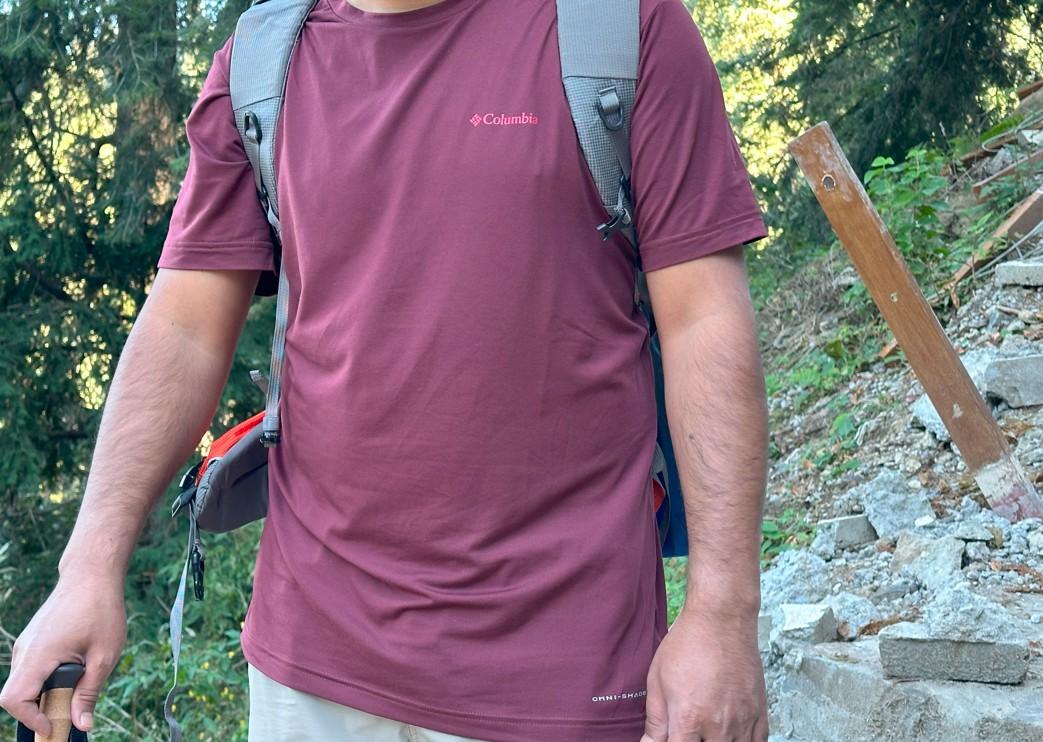Choosing apparel has always been a point of concern in everyday life. Fabrics are one of the most important aspects to consider while deciding on style, stitching, design, and durability. This concern increases even more for hikers.
Hiking requires appropriate clothing—most importantly, the fabric we use—for warmth, resilience, and durability. In all quests, polyester is considered one of the most appropriate fabrics for hiking.
What Is Polyester?
Definition and process
Polyester is a synthetic fiber made up of polymers of polyethylene terephthalate (PET) or ethylene glycol through a process called polymerization. This process involves dehydration of the compounds used for the polymerization.
History of the use of polyester in hiking
Polyester was discovered in the 1940s; however, it gained attention after World War II as a cheap and durable fiber.
Related: How to Prevent Chafing
It became a hiker’s choice for its warmth, lightweight, strength, and reliability. This fiber has now become a wonderful choice for people from all walks of life, ranging from the fashion industry to hiking.
Pros of Polyester for Hiking
Moisture-wicking Capabilities
Firstly, polyester is a hydrophobic fiber. It wicks away moisture from the body instead of absorbing it. During hikes, sweat and moisture are some of the major issues that give rise to allergies and even trench foot.

Polyester takes water away from the body. This process is commonly known as capillary action. It takes water away from the body instead of absorbing it.
Unlike cotton, which is bad for hiking, polyester stays lightweight, dries out the body, and keeps the person cool and safe.
Durability and Strength
Secondly, polyester is the best choice for hiking due to its strength, resilience, and durability. Experts in the field compare the fibers from some modern polyesters to steel strappings in strength; however, considering these truly comparable will be a slight exaggeration.
It is evident from the discussion that the fibers of polyester hold immense strength. Polyesters have been a top pick for the textile industry when it comes to making hiking gear like gloves, overcoats, shirts, and socks.
Manufacturers blend polyester with nylon and other fabrics to create amalgams; however, pure polyester’s durability and strength are unmatched.
Lightweight and Packable
Furthermore, hikers need lightweight and easy-to-pack apparel for expeditions. Polyester takes the lead in this category too.
Superfine fiber, polar fleece, and spun polyester are the most recommended for wind resistance, waterproofness, and lightweight fibers. It is also soft and easy to pack in hiking bags.
Quick-drying
Adding to it, polyesters dry faster than any fiber in comparison due to their softness, lightweight, and water repellence. In case of rain, hikers need their apparel to dry faster.

Polyester guarantees this quality in its fabric. Manufacturers make tents of polyester, considering its easy-drying qualities.
Breathability
Fabric experts have often debated the property of the breathability of polyester. Polyester is less breathable than natural fabrics, but it is comparatively more breathable than most fabrics.
Related: Merino Wool Hiking Socks: Are They Worth It?
Despite this shortcoming, polyester remains a favorable choice for hikers.
Cons of Polyester for Hiking
Not as Breathable as Natural Fibers
As discussed earlier, polyester might not be as breathable as natural fibers. However, manufacturers mix it with nylon and cotton to make it more breathable. This property of polyester is compromised owing to the fact that it traps heat and blocks wind.
The fabric and its weave play a significant role in determining how much air will be trapped inside.
Odor Retention
Adding further, polyester retains sweat and provides a breeding ground for bacteria. When sweat accumulates, it creates odor and rashes, ultimately causing irritation.
These conditions frustrate hikers due to longstanding odor and irritation. Synthetic fibers retain odor more than natural fibers.
Environmental Concerns
Furthermore, from its production to its degradation, polyesters are highly environmentally unfriendly. The plastic nature of polyester also makes it non-biodegradable.
Its recycling is difficult, which makes it hard to reuse and causes depletion of natural resources. Its dye creates water pollution, and microplastics from polyester harm marine life.
When to Choose Polyester for Hiking
Keeping the above discussion in mind, polyester proves to be a favorable choice in rain, damp weather, and winter. As it is wind- and water-resistant, polyester becomes the best choice in such weather conditions.
However, hikers should avoid it in summer since it traps heat and gives rise to bacteria and other microbes. During hot weather, it traps sweat and causes odor.
Polyester is mostly blended with wool, rayon, and cotton to increase its breathability and softness. The yarn-making stage blends the fibers of both fabrics, creating a detailed mixture. There are various ways of fabric blending, e.g., pin drafting and intimate blending.
Alternatives to Polyester for Hiking Gear
Apart from polyester, many natural and synthetic fibers are reliable for hiking. Among natural fibers, cotton, merino wool, silk, linen, hemp, bamboo, cashmere, and jute can be good options for their softness and breathability.
Considerable synthetic alternatives can be nylon, which offers durability, resistance to moisture, and a quick-drying nature.

In summer, it is highly recommended to go for polyester, wool and nylon for hiking for their softness and breathability.
Warmth and wind resistance are not the only aspects to keep in mind while choosing gear for hiking.
Conclusion: Is Polyester Good for Hiking?
As hiking is a long and adventurous sport, it demands careful consideration of what to wear and what to take along. Warmth and durability are not among the most highly rated characteristics to look for while hiking.
Polyester is a fabric that is water- and wind-resistant, which makes it a top pick. Its capillary action keeps the body dry. In altitudes, temperatures are often low, so the question of breathability reduces to negation.
In a nutshell, polyester is a great choice for hiking considering durability, strength, water resistance, and weight. Its moral and ethical concerns can be addressed after a comfortable hike.
FAQs
Is Polyester or Cotton Better for Hiking?
Polyester is better for hiking as it is durable, strong, and resilient. Cotton is a soft fabric that may not be as durable and resilient in rough weather and tough treks.
During hikes, water and damp environments are difficult to avoid. For these conditions, a quick-drying and moisture-repellent fabric is most suitable.
Is Polyester a Good Base Layer for Hiking?
Hikers choose fabric for base layers, keeping in view their moisture-wicking and quick-drying abilities. Polyester is one of the best fabrics in these categories.
So, yes—polyester can be a good base layer in hiking gear. Even if it gets wet, it will dry out nicely and easily to keep the hiker comfortable.
Related: Best Material for Hiking Socks
